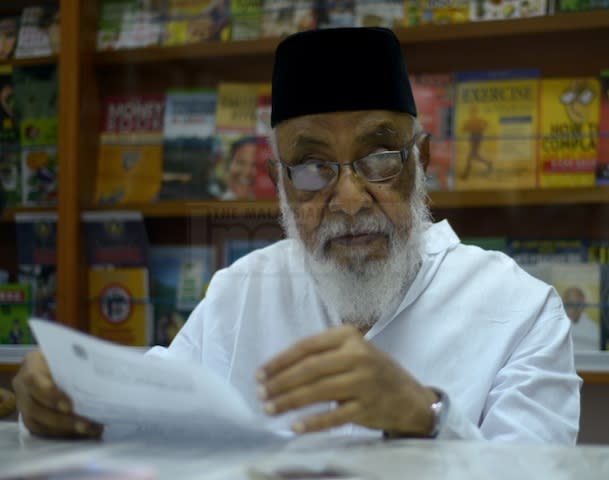Consumer groups urge Penang to scrap land reclamation project

Two groups have asked Penang to scrap the massive land reclamation project for a new property development due to the environmental impact on the island’s coast.
The Consumers' Association of Penang (CAP) and Sahabat Alam Malaysia (SAM) have called for the proposed reclamation of Seri Tanjung Pinang's phase two (STP2) project to be scrapped.
STP2 is reportedly the largest land reclamation project in the country to date. It covers 308 hectares over two manmade islands. It will need 33.1 million cubic metres of sand or fill material and two million tonnes of rocks.
CAP and SAM president SM Mohamed Idris said the project is unjustified and comes at a price of adverse environmental impact, mainly due to loss of coastal resources.
The project, he said, is being justified as a move to "relieve growth pressure from land scarcity" but the detailed environmental impact assessment (DEIA) fails to consider and include all other on-going projects in Penang.
"The description of the STP2 project is grandiose.
"The appraisal process to justify the project tends to overstate the benefits and understate the costs, making it appear desirable," he told a press conference at his office today.
The DEIA for the proposed project, which was exhibited for public review and feedback to be submitted by March 14, had been found lacking by CAP and SAM.
Idris said CAP and SAM had submitted their comments to the Department of Environment (DOE) on March 6, along with input from staff scientists of Environmental Law Alliance Worldwide (ELAW).
He said the DEIA should have also included data on the current number of housing units on the island and state, on-going housing development projects and projects that have been given planning permission by the local authorities, before justifying the development of STP2.
As STP2 is a continuation of the first phase of the Seri Tanjung Pinang development (STP1), Idris said its impact should also be assessed before proposing the STP2 project.
He cited a report that quoted state Department of Irrigation and Drainage (DID) deputy director Mohd Abu Bakar Othman as saying that the mud build–up along Persiaran Gurney was due to the STP project in Tanjung Tokong nearby.
Abu Bakar had reportedly told the Penang Local Government Forum on December 21, 2011 that weak currents as well as the STP1 reclamation project had played a part in preventing sediments from properly flowing away.
Abu Bakar reportedly said the phenomenon was discovered after the two-year long Integrated Shoreline Management Plan (ISMP) study was completed in 2010.
Idris said the DEIA for STP2 also discussed the impact of the project on fisheries, including the release of sediment during dredging and the permanent smothering of mudflats and other benthic environments that support local fisheries.
"It is pointed out that the STP1 project was disadvantageous to the fisher community due to marine life and fishing activity impact.
"These problems are yet to be resolved as some of them are long term in nature. With the advent of STP2, which is a larger project, we are concerned that the fisheries sector and livelihood of fishermen will be seriously affected," he said.
Such concerns, he said, are supported by ELAW scientists, who have found that the DEIA has not assessed how losing 328 hectares of mudflat – a vital component of an overall marine food chain – would impact pelagic and demersal fish species that the fishing communities of the Gurney-Paramount, Tanjung Tokong and Tanjung Bungah also rely upon.
"The DEIA substantially underestimates the impact of the STP2 project on fishing communities."
Idris also hit out against the DEIA's assessment that birds and fish affected by the project "can easily go elsewhere because they can move".
"The DEIA states that loss of the existing sandy mudflats is permanent and unmitigated but a new coastline will be created and in due course, the marine intertidal life will be re-established and the coastal birds will resume their feeding and foraging activities in the newly established coastline.
"It shows a lack of understanding of both the natural history of the species and the conditions they rely on to feed and reproduce, and the idea that over time marine life will just return to the way it was shows a real abdication of responsibility on the part of the project proponents."
Idris also shot down the DEIA's "unfounded claim" that STP2 will improve water quality.
"Extending a drain and ensuring better flushing does facilitate water flow, but this argument sounds like a 'dilution is the solution to pollution' argument.
"Better water flow does not address the quantity of contaminants and solid waste entering the waterway, and in fact more development substantially increases the likelihood that the quantities of the waste streams will be higher," he told a room full of reporters.
Idris also warned that because STP2 is not a standalone project, there may be many other components of the project that bring about adverse impacts on the environment, for example quarrying of rock and sand mining activity.
"We urge the EIA review panel to reject this DEIA and the approving authority to scrap this proposed project," he said. – April 2, 2014.


